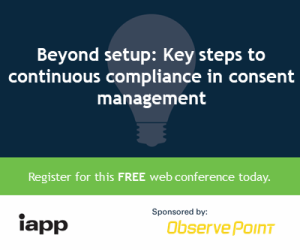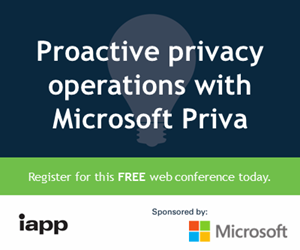By Annie Lindstrom
Would you share your genomic information with the world at large via the Internet? That's a question ten people had to answer before taking part in a Harvard Medical School project that will do just that. Annie Lindstrom speaks with participants in the Personal Genome Project.
The PGP-10 is a small group of ten pioneers who are taking the phrase, "I'm an open book" and the science of genetics to a whole new level. They are the first of what Harvard Medical School hopes will be an eventual 1,000 people who will be willing to forsake privacy concerns and share their genomic information, DNA sequences, medical records, and other personal information with the research community and the general public as part of a study called the Personal Genome Project (PGP).
The study follows in the footsteps of the Human Genome Project (HGP), which in 2001 provided the first drafts of nearly complete human genome sequences. Such information has since been used to advance medicine, human biology, and knowledge of human origins. George Church—an HGP initiator, director of the PGP and one of the PGP-10, himself—hopes the PGP-10, and the 1,000 people to come, will spark the general public's interest in getting their own genomes sequenced. The more people who participate and share their information openly, the more geneticists and everyone involved will benefit, explains Church, who in addition to his role in the PGP is a professor of genetics at Harvard Medical School and a professor of health sciences and technology at Harvard and MIT.
One important factor that is likely to influence the general public's interest in genomic sequencing is government assurance that their genetic information won't be used to harm them. Earlier this year, Congress demonstrated its support of genomic exploration and associated commercial endeavors by passing the Genetic Information Nondiscrimination Act of 2008 (GINA). The Act alleviates some of the privacy and discriminatory concerns associated with collecting and sharing genomic information by prohibiting group health plans and insurers from denying coverage or charging higher premiums to a healthy individual who's genome shows a predisposition for disease. GINA also prohibits employers from using genetic information to fire, or fail to hire or promote, an employee.
Nothing to hide
While GINA addressed some of their privacy concerns, the legislation was passed after most of the PGP-10 already had agreed to participate in the project. With or without GINA's protections, the PGP-10 had a lot to think about when making their decision to bare their personal information to the world. Privacy Advisor spoke with three members of the PGP-10—Misha Angrist, Esther Dyson and George Church—about what went into their decision to share their genetic and health histories with the world.
Misha Angrist
Assistant Professor, Duke University Institute for Genome Sciences & Policy
Angrist holds a doctorate in genetics from Case Western Reserve University and an MFA in writing from the Bennington writing Seminars. A former board-eligible genetic counselor, Angrist has worked as a researcher, biotechnology consultant, writer and editor. He is writing a book about personal genomics, which is one of several reasons he chose to join the PGP-10.
"Originally, I was just going to write a book about George Church, but when I found out about the PGP-10, I thought it would be more interesting to write about it from the inside. So, I put my name in the ring and was fortunate enough to be chosen," says Angrist.
Secondly, Angrist says he's "quite sympathetic" to Church's up-front claim that keeping information of this nature private would be very difficult. Thirdly, Angrist says that if the goal of genomics is to understand what makes us human and how genes and environment impact one another, then anonymity "impoverishes" the data and limits the amount of knowledge that can be reaped from each participant and by the study as a whole.
Furthermore, the PGP encourages a more collaborative model for medical research as opposed to the guinea pig model that exists today in large part because of the need to keep study subjects' privacy intact, he explains. Full disclosure, on the other hand, encourages and enables study subjects to be engaged in the process by providing their thoughts and information to those who are interested in them. Nevertheless, some precautions are in order, he adds.
"The PGP is looking for people who are inclined to give total access," says Angrist. "I will probably put my data on the Web, but I want to look at it first. If I carry something scary then I want my children to find out from me and my wife."
Angrist says that the ultimate purpose he and the rest of the PGP-10 serve by being involved in the project is their ability to "raise the possibility that genetic research can be viewed differently."
"While we don't yet understand all the ways in which this information is, and will be, important, we hope we can publicize, demystify and destigmatize it."
Esther Dyson
Principal, EDventure Holdings
Board member and active investor in a variety of start-ups in the information technology, aviation/space travel, healthcare/genetics industries, Dyson's approach to life and science is probably summed up best by the words that conclude her Web site bio—What I want on my epitaph: "I wasn't done yet! There is still more to learn and to fix." Among her many endeavors, Dyson also is a board member of 23andMe, a personal genomics company.
"I first heard about the PGP from George Church and I told him I would love to be part of it as soon as he got Independent Review Board approval," says Dyson. "People think genetic information is so mysterious and powerful and scary. I wanted to help make people think that it's really just some more information. Sometimes it's interesting and sometimes it's not."
Although she says she had no reservations about unveiling any health concerns that the project might reveal about her, either to herself or the world, she says she can understand that other people might have concerns and their own particular reasons for them.
"I'm not saying anyone should publish their information, I'm just saying it's not crazy to do so," she says.
"The PGP will help improve general perception of genetic information as something useful rather than scary. And with luck, my information will be useful to someone," she adds. "What's really interesting isn't my genome itself, but the interpretation of the data and what it is likely to be correlated with. There's so much more we still have to learn and we need lots of genomes and associated health records to learn it."
Therefore, the more the merrier, says Dyson when asked about the general public diving into genome mapping.
"I think people should think it's a great idea, but they should be sensible and sensitive and make sure their family doesn't object. The more scientific information available the better," she says. "They can do it through the PGP and make it completely public, or they can contribute it privately through something like 23andMe, but sharing this information can actually be helpful to them as well as to lots of other people."
George Church
Director of the PGP and Professor of Genetics, Harvard Medical School, Professor of Health Sciences & Technology at Harvard and MIT
In 1984, Church co-developed the first direct genomic sequencing method and helped initiate the Human Genome Project. A host of scientific firsts later, he initiated the Personal Genome Project (PGP) in 2005. Church explains that his decision to become a participant in the PGP-10 was actually not his own idea.
"My Institutional Review Board thought I should experience the same risks and benefits as my research subjects," says Church.
Church says that when he started the PGP and research on human subjects, he was well aware of privacy concerns. He realized that the project would put a lot of data concerning identifiable genetics and traits in the same place.
"That was fairly rare then and is still quite rare. In fact, the PGP may be the only place both are together in an open access database," he adds. "I decided it would be better and safer for the project and the people involved to pick people that were well informed and that didn't care about anonymity."
While the study is in its beginning stages, data has been collected on all 10 participants. Each will be updated on their results along the way to their full genomic sequencing, he explains. However, money and resources will determine how much data is collected as the project proceeds.
"There is kind of a trade off between how much money and resources we spend per person vs. the total number of people who participate," says Church. "I'd prefer to have 100,000 people with less than a full genome vs. a full genome on 1,000 people."
Church adds that 8,000 volunteers are waiting in the wings to join in the study and that number will likely increase as scientific papers are released and people see exactly what's going on, he adds.
Church says participating in the PGP is akin to a person donating their body to science before they die, but talk on the blogs he's read is split between people who say participants are crazy because they will lose their insurance and those who say they feel sorry for people who can't see beyond insurance concerns.
When he made his decision to join the PGP-10, Church says he had the same concerns as most people.
"Maybe not everybody cares about the project the way I do, but I thought through the insurance issues just the same," says Church. "GINA was not in place when we started, but it's in place now. It's not perfect, but it's an indication of where things are going, maybe."
Church says the potential harms from learning about one's genomic information include the possibility of a false-positive interpretation of their data. Potential risks of revealing one's information to others could include people getting the impression or claiming that they know more about you than they actually do know, he explains.
As far as the benefits are concerned, Church says he doesn't want to overstate them at this point.
"It's definitely a team effort. The benefits to society are that if we all share our information, we will all get some benefits, he says. "Right away, benefits to the individual might be few. But, if you happen to have a debilitative disease with a cure, you could experience a huge benefit."
As more software develops that can crunch the data and correlate it, participants could experience even more benefits, he adds.
"There are things that can happen when things are open that cannot happen when they are closed," says Church. "You can dream up ways you can accomplish things in a closed environment, but things can happen faster and in more open, integrated environments."
As far as the average Joe is concerned, Church likens genomics today to computers in the 1970s. Back then, only geeks were interested in computers, he explains.
"Right now this is not essential for medicine, but I wouldn't be surprised if five years from now everybody knows it," says Church. "But until they know it, the average person should probably steer clear of it. But they can get to know what's going on by looking at Web sites or the growing number and variety of resources."
Annie Lindstrom is president of KittyHawk Communications, Cape Coral, Fla. Annie has worked as a freelance writer since 2000. Prior to launching her own business, she worked as a journalist for the telecommunications industry's top trade publication since 1989.






























Comments
If you want to comment on this post, you need to login.